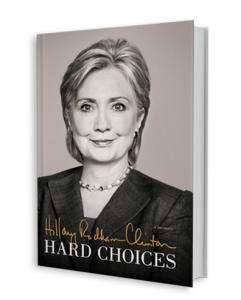
 Given the Time Magazine cover once linking Hillary Clinton with the rise of “smart power,” it’s hardly surprising that her new memoir about her time as Secretary of State has sparked renewed attention to the idea. While she embraced the concept as far back as her confirmation hearing, bipartisan consensus on smart power pre-dates her tenure in Foggy Bottom.
Given the Time Magazine cover once linking Hillary Clinton with the rise of “smart power,” it’s hardly surprising that her new memoir about her time as Secretary of State has sparked renewed attention to the idea. While she embraced the concept as far back as her confirmation hearing, bipartisan consensus on smart power pre-dates her tenure in Foggy Bottom.
In fact, prior to the 2008 elections, Republicans and Democrats were already on the record on the need for both the “hard” power of the military and the “soft” power of diplomacy and development to deal with today’s complex global threats.
“Smart power” entered the Washington debate largely with a CSIS report, co-chaired by Joseph Nye and former Deputy Secretary of State under President George W. Bush, Richard Armitage, in 2007 that sought to lay out a blueprint for the next Administration. In the bipartisan commission’s definition, “Smart power is neither hard nor soft—it is the skillful combination of both. Smart power means developing an integrated strategy, resource base, and tool kit to achieve American objectives.”
The consensus on strengthening diplomacy and development alongside defense was driven in part by the recognition by many in the Pentagon that the challenges of global terrorism did not have a military solution.
Former Defense Secretary Robert Gates repeatedly called elevating diplomacy and development, referring to himself as the “defense secretary who fought for the State Department’s budget” in his recent memoir. Former Chairman of the Joint Chiefs of Staff Admiral Mike Mullen also embraced the need to ensure resources for diplomacy and development, handwriting in notes to Congressional leaders looking to cut the International Affairs Budget, “the more significant the cuts, the longer military operations will take and more and more lives are at risk!”
In her book, Secretary Clinton says she embraced the concept because she believed that the in the 21st century, the State Department needed to go “beyond the traditional work of negotiating treaties and attending diplomatic conferences” and use “technology, public-private partnerships, energy, economics, and other areas…to complement more traditional diplomatic tools and priorities, not replace them.”
Much of what Secretary Clinton embraced builds on the work of her predecessors, Colin Powell and Condoleezza Rice, who sought to elevate and strengthen diplomacy in U.S. foreign policy after 9/11. President Bush’s President’s Emergency Plan for AIDS Relief (PEPFAR), the President’s Malaria Initiative, and the work of the Millennium Challenge Corporation (MCC) to promote economic growth as a means of combating global poverty are all “smart power” successes.
Secretary Clinton’s foreign policy legacy will continue to be debated in the shadow of the coming presidential elections in 2016. Whether you use the term “smart power” or not, the common bipartisan principle is that the United States must use all of our tools of national power to advance our interests, build economic prosperity, and promote America’s humanitarian values.
As Senate Foreign Relations Committee Ranking Member Senator Bob Corker (R-TN) recently argued, providing foreign assistance to promote democracy and prevent conflict “are reasons for our nation to continue to understand the importance of smart power.”